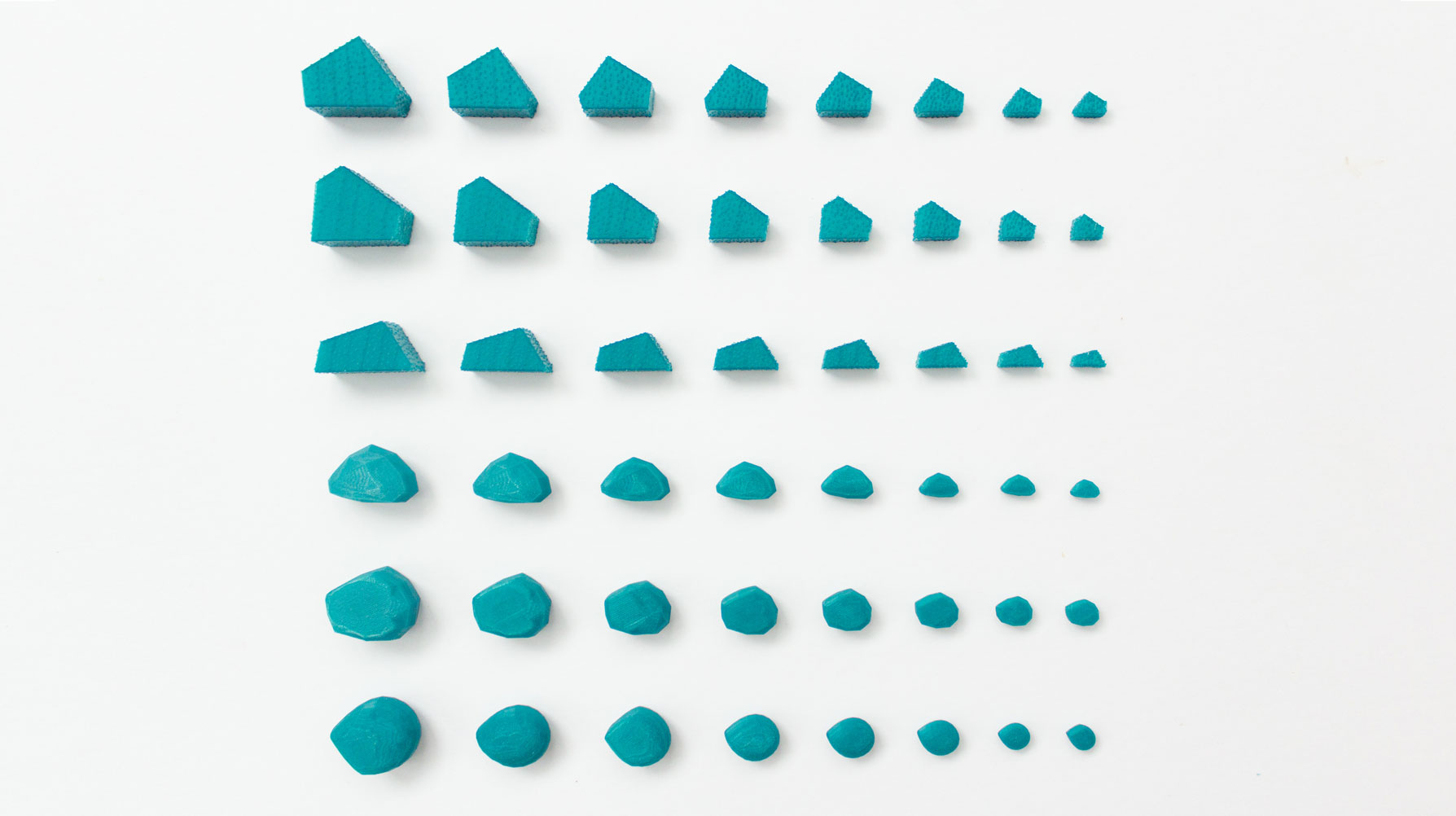
There is a lack of construction kits on the market for children to explore organic shapes that they are connected the most in their everyday life. Majority of them have geometric forms, implying learners to build regular structures (e.g., architecture, mechanism, or vehicles). Thereby how do we create a construction kit that supports learners to explore fractals — a common form seen in nature?

To handle multiple threads in the project, I mapped out all the aspects of the project (like a product manager) and set a goal for each of them. Then, I prioritized those goals based on my ideal achievement, course requirements (this is a school project), and proper workflow. After all these planning work, it was time to head down and dig in those subtasks.
First and foremost, understand what made fractals fractal.
I ran to the Columbia math library for the book about fractals and the architecture library for computational organic forms. There are two keywords stood out to me — self-similarity and rule. I brought these up in my Generative Design class to see how computational design approach could create unconventional construction kits. I also shared this idea to my Educational Game Design class to see if games could be a way to scaffold young learners’ fractal creation process. Surprisingly, there was a possibility in between those areas!

I wrote a program in Grasshopper and ran 1000+ simulations to find the optimal shape for the fractal blocks. After fully explore all the possibilities, I fabricated the optimal ones with Ultimaker 3D printers. In the meanwhile, I brainstormed game mechanisms that made players building natural forms with those blocks and designed a deck of rule cards. With all the game pieces ready, I playtested with grad students to receive initial feedback.



Let’s dive in the generative design approach of creating fractal blocks! Given the fact that the circle is the mother of all shapes, I generate multiple irregular polygons by setting pairs of polar coordinate as vertices of the polygons. The angles range from 0 to 360, and the radius determines the scaling factor. By altering the angles, the model can generate multiple shapes to find the most stackable one.


My high-level goal is to explore the perfect shape for stacking upon a recursive structure. To achieve that, I programmed the objective as minimizing the overlapping area in the structure. Meanwhile, the base area of the shape should be larger than 180 square centimeters to have enough contact area for sufficient friction. The two settings helped shape the evolutionary process of the unit.




With objectives and constraints defined in the program, the generated formed evolved to something that I instinctively associated with a flower called Hyacinth Muscari Grape. That moment felt like thousands of neurons in my brain firing at once. I was in awe of the wisdom of Nature.

My original idea was to create fractal “building” blocks that were stackable, but that didn’t happen as there’s a size limitation of the nozzle in 3D printers that I had access to. Adhesive micro structure was simplified to a bumpy surface that couldn’t provide sufficient friction. A few months later in a manufacture exhibition, I surprisingly found that there were two companies doing micro 3D printing service, but my spinning wheel had moved on to the next project.
Learning to make better design choices has become my drive to explore new workflows. I see a lot of potential in generative design because it can fully explore a design space that goes beyond the limitation of a human designer. On the flip side, like any other AI, it has its limitations: garbage in, garbage out, and problem space has to be well-defined. Knowing its nature, how can human designers collaborate with computer designers to make more informed decisions - is a crucial question for the next generation of designers.
If you are interested in crunching more articles about Generative Design X Learning Design, here's a 13-page academic paper I wrote.